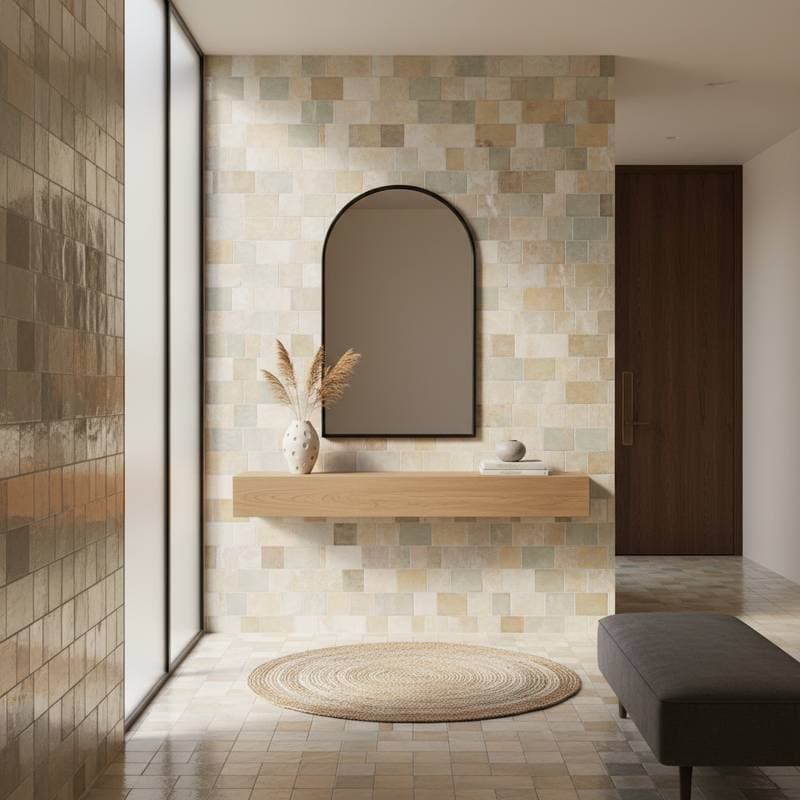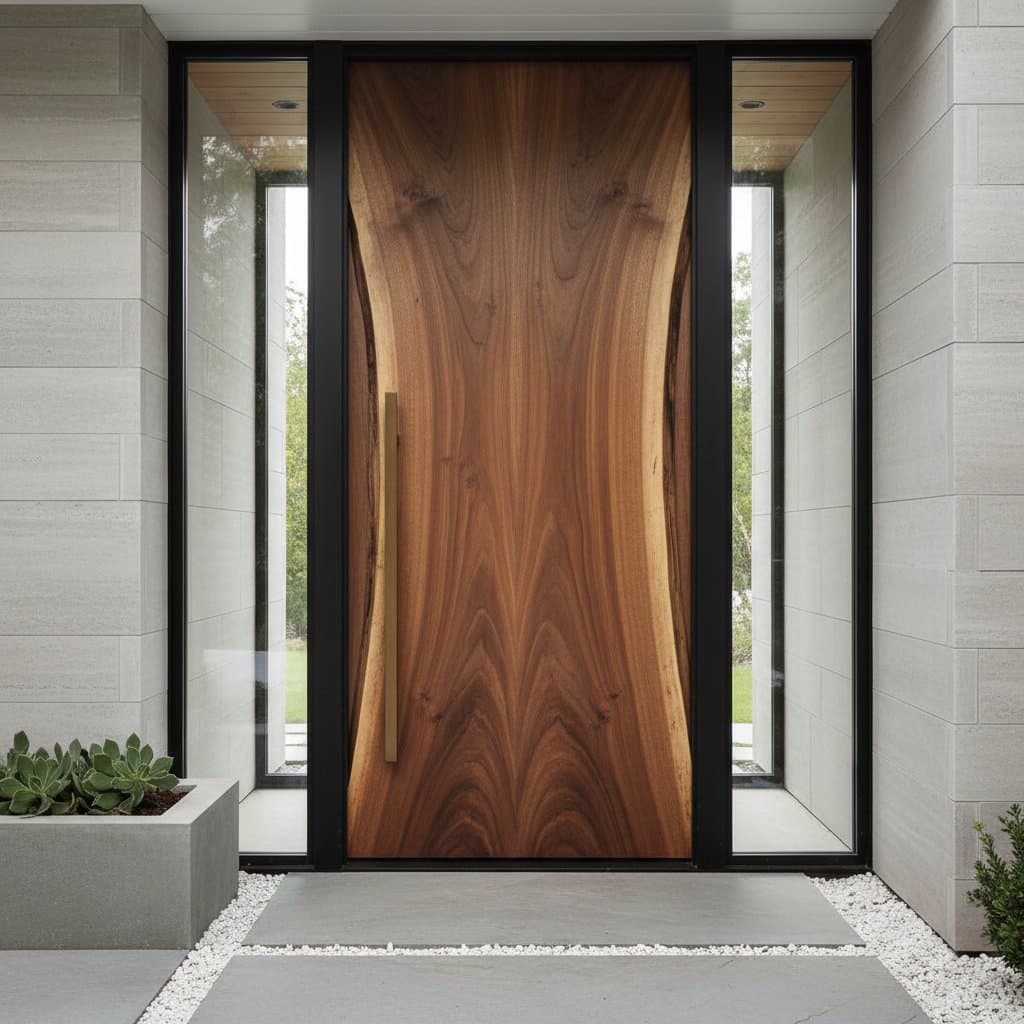Elevate Your 2025 Entryway with Japandi Wood Designs
Japandi design emerges as a prominent trend in home interiors, combining Japanese minimalism with Scandinavian practicality. This fusion produces spaces that prioritize serenity and efficiency. In entryways, where initial encounters set the tone, Japandi wood elements foster an inviting atmosphere suitable for contemporary and classic residences alike.
Consider Japandi woods for your next entryway refresh. These selections promise enduring appeal through natural finishes and thoughtful integration. The following sections detail material options, expense considerations, upkeep routines, and implementation strategies to realize this understated elegance.
Selecting Ideal Woods for Japandi Aesthetics
Central to Japandi is the use of wood tones that emphasize inherent textures and subtle hues. Designers select light varieties to evoke openness without overwhelming varnishes. This approach achieves equilibrium between restraint and inviting warmth.
Common woods suit various entryway demands, from doors to flooring. Each offers distinct visual and practical benefits. Review the table below for a comparison of popular choices.
| Wood Type | Cost per Sq. Ft. | Color Tone | Maintenance Needs |
|---|---|---|---|
| White Oak | $6 to $10 | Pale beige to honey | Low, easy to clean |
| Ash | $5 to $9 | Creamy light tone | Moderate, may yellow slightly |
| Maple | $4 to $8 | Soft neutral | Low, resists wear |
| Bamboo | $3 to $7 | Golden neutral | Very low, eco-friendly |
| Walnut | $8 to $15 | Rich chocolate brown | Moderate, periodic oiling |
White oak stands out for its strength and affinity for matte finishes, ideal for high-traffic thresholds. Ash provides a softer glow that pairs seamlessly with neutral walls. For eco-focused projects, bamboo delivers sustainability without sacrificing style.
Incorporate walnut sparingly to add depth, such as in accent panels or door frames. Test samples under your home's lighting to confirm harmony. This step ensures the wood enhances rather than dominates the space.
Key Influences on Expenses and Aesthetic Outcomes
Budgeting for a Japandi entryway involves multiple variables. Material quality directly impacts both appearance and durability. Installation complexity further shapes the total outlay and project duration.
Examine these primary factors:
- Wood grade and finish: Opt for select-grade lumber to minimize knots and imperfections. Hand-applied oils or waxes elevate the natural patina but increase costs by 20 to 30 percent over standard prefinished options.
- Entryway dimensions: Measure square footage precisely, including walls for paneling. Expansive areas might necessitate custom milling, adding $500 to $2,000 depending on scope.
- Regional labor costs: In metropolitan zones, expect rates of $75 to $150 per hour. Rural installations often run 15 to 25 percent lower, allowing savings on professional services.
- Bespoke features: Integrate elements like recessed shelving or slim console tables. These custom touches can raise expenses by $1,000 or more while enhancing functionality.
- Eco-certifications: Choose Forest Stewardship Council-approved sources for ethical appeal. Reclaimed woods, though pricier upfront, reduce environmental impact and may qualify for green building incentives.
Mason Wright, a professional installer at Northwood Design Group, notes, “Homeowners appreciate Japandi's enduring quality, yet they must prioritize skilled execution. A properly crafted entryway withstands daily use for generations with few modifications.”
To control costs, source materials from local suppliers and plan during off-peak seasons. Consult contractors early to align visions with feasible budgets. This preparation prevents surprises and ensures a polished result.
Essential Upkeep Strategies for Sustained Beauty
Japandi woods endure well under routine care, preserving their organic allure. Proactive measures shield surfaces from everyday hazards. Consistent attention yields a space that ages gracefully.
Adopt these practices:
- Dust surfaces weekly with a soft microfiber cloth to remove particles that dull finishes.
- Clean spills promptly using a solution of mild soap and lukewarm water; avoid ammonia-based products that erode protective layers.
- Refresh oil finishes on floors and furniture every two to three years, focusing on areas with frequent foot traffic.
- Place protective mats at the entrance to trap dirt and prevent abrasions from footwear or paws.
- Monitor indoor humidity between 40 and 60 percent using a hygrometer; employ dehumidifiers if needed to avert expansion or splits.
For deeper cleans, consult a specialist annually. These habits not only extend material life but also maintain the serene vibe central to Japandi. Over time, woods develop a subtle patina that enhances character.
Practical Advantages of Japandi in Contemporary Settings
Japandi transcends visual appeal by addressing real lifestyle needs. Its streamlined layout discourages excess possessions, easing daily organization. Breathable woods regulate moisture, promoting healthier indoor environments.
This style suits diverse households, from urban apartments to suburban homes. In smaller foyers, light tones expand perceived space through reflective qualities. Larger halls benefit from layered textures that add subtle interest without clutter.
Homeowners report reduced stress upon entering such spaces, attributing calm to the natural elements. The design's neutrality allows easy updates via accessories, ensuring adaptability. Property values often rise with these timeless upgrades, offering financial benefits alongside comfort.
Pair Japandi woods with matte black hardware or linen textiles for cohesion. Experiment with potted greenery to introduce life without overwhelming simplicity. These additions amplify the welcoming essence.
Steps to Realize Your Japandi Entryway
Transform your entryway into a Japandi haven by starting with a mood board of wood samples and palette swatches. Engage a designer for layout sketches that incorporate storage without visual bulk. Select contractors experienced in natural finishes to guarantee precision.
Budget 10 to 15 percent extra for unforeseen adjustments. Track progress with photos to refine details on site. Upon completion, enjoy an entrance that embodies tranquility and invites daily renewal.
This investment in Japandi woods creates more than an aesthetic shift; it establishes a threshold of peace that resonates long into the future.






